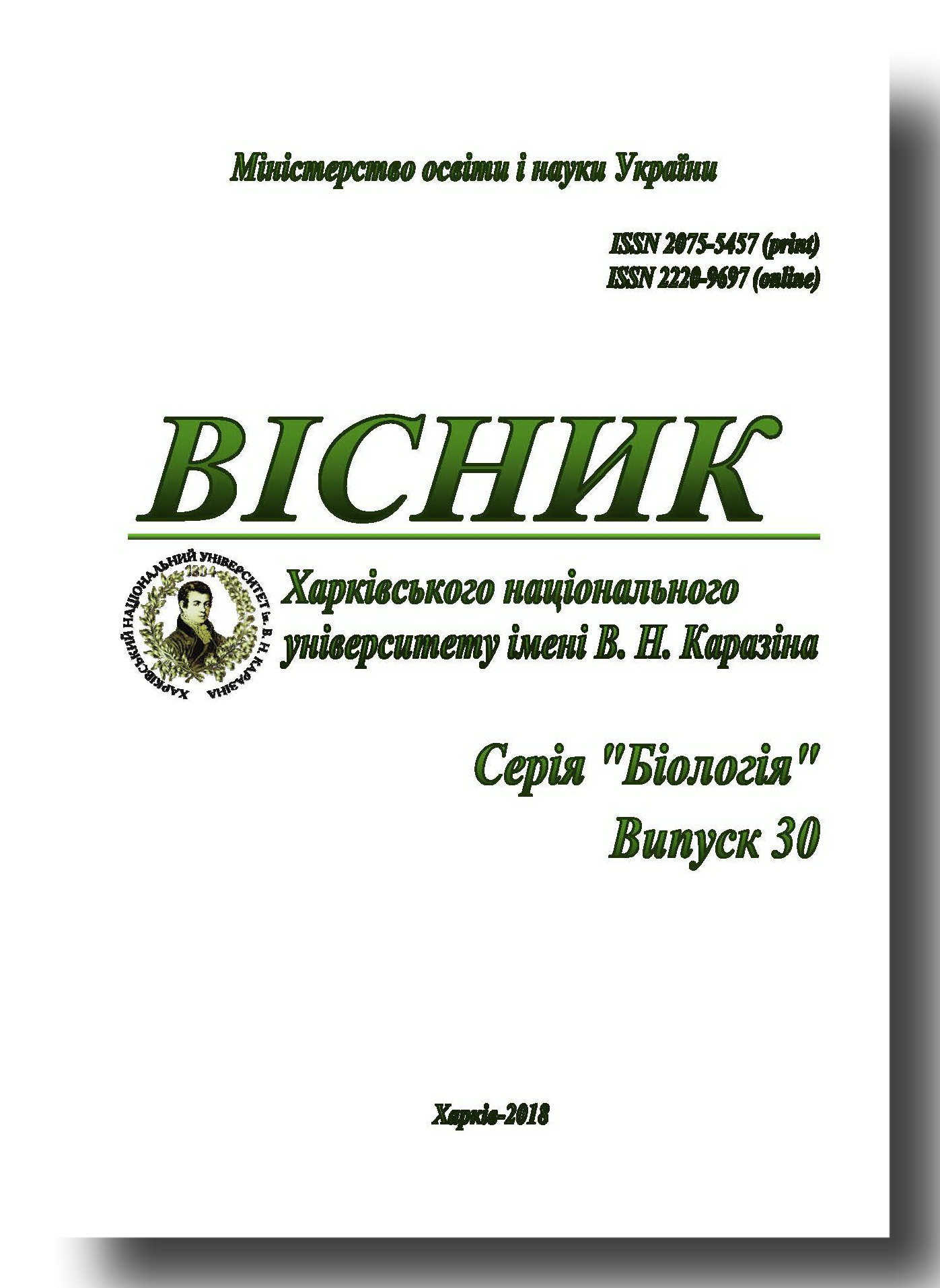Expression of some cytokine genes and amount of their products in fibroblast cultures from skin and lung of rats in ontogenesis
Abstract
The expression of interleukin (IL 1, 2, 6, 8, 10–13, 15, 18), fibroblast growth factors 1, 2, 8, and transforming growth factors α and β1 genes in skin and lung fibroblast cultures (donors – white rats at the age of 0.5, 1, 3 and 24 months) was studied. It is known that these molecules regulate the development and restoration of connective tissue in postnatal ontogenesis, at the same time, different types of connective tissue, in connection with their functional characteristics, develop under unequal conditions and under the influence of various internal and external factors, but not yet investigated the age specificity of the production of these molecules in the cells of connective tissue of various types. That is why, in this paper, the age dynamics of these indicators was compared in cultures of fibroblasts taken from various organs – skin and lungs. The content of the products of these cytokine genes in cultures was also determined, in order to compare the ratio of production of pro- and anti-inflammatory interleukins in cultures of skin and lung fibroblasts. The age dynamics of these indices and its features in connection with the functions of the cytokines studied are discussed. For the genes of all investigated types of cytokines – interleukins, fibroblast growth factors and transforming growth factors – a change in the intensity of expression and accumulation of their products in postnatal ontogenesis was recorded. Dynamics of both the expression intensity of the studied genes and the accumulation of their products is qualitatively similar in cell cultures of both types of tissues, but for skin fibroblasts the age and quantitative variations of these parameters are more pronounced. The maxima of expression and concentrations of all three types of cytokines studied are between 0.5 and 3 months with significant quantitative differences both between cytokinins of different types and between cultures of fibroblasts of the lungs and skin. The significance of the ratio of both expression and accumulation of the products of the anti-inflammatory interleukin genes to pro-inflammatory genes in ontogeny increases in cell cultures of both types of fibroblasts, it can reflect both the developmental features of the organism and the decrease in the ability to regenerate connective tissue with age.
Downloads
References
Кетлинский С.А., Симбирцев А.С. Цитокины. – Спб: ООО «Издательство Фолиант», 2008. – C. 369–378. /Ketlinsky S.A., Simbirtsev A.S. Cytokines. – Spb: OOO "Publishing House Foliant", 2008. – P. 369–378./
Bickel M. The role of interleukin-8 in inflammation and mechanisms of regulation // J. Periodontol. – 1993. – Vol.64 (5 Suppl). –P. 456–460.
Böttcher R.T., Niehrs C. Fibroblast growth factor signaling during early vertebrate development // Endocr. Rev. – 2005. – Vol.26 (1). – P. 63-77.
Brocker C., Thompson D., Matsumoto A. et al. Evolutionary divergence and functions of human interleukin (IL) gene family // Human Genomics. – 2010. – Vol.5 (1). – P. 30–55.
Coumoul X., Deng C.X. Roles of FGF receptors in mammalian development and congenital diseases // Birth Defects Res. C. Embrio Today. – 2003. – Vol.89 (4). – P. 286–304.
Derynck R., Jarrett J.A., Chen E.Y. et al. Human transforming growth factor-beta complementary DNA sequence and expression in normal and transformed cells // Nature. – 1985. – Vol.316 (6030). – P. 701–705.
Jun-Ming Zhang, Jianxiong A.N. Cytokines, inflammation and pain // Int. Anesthesiol. Clin. – 2007. – Vol.45 (2). – P. 27–37.
Martelossi C.G.C., Paiva T.K., Badaró G.S., Brajão de Oliveira K. TGF-β1 functional polymorphisms: a review // Eur. Cytokine Netw. – 2016. – Vol.27 (4). – P. 81–89.
Ornitz D.M., Itoh N. Fibroblast growth factor // Genome Biology. – 2001. – Vol.2 (3). – REVIEWS3005.
Wahl S.M., Hunt D.A., Wong H.L. et al. Transforming growth factor-beta is a potent immunosuppressive agent that inhibits IL-1-dependent lymphocyte proliferation // J. Immunol. – 1988. – Vol.140 (9). – P. 3026–3032.
Authors retain copyright of their work and grant the journal the right of its first publication under the terms of the Creative Commons Attribution License 4.0 International (CC BY 4.0), that allows others to share the work with an acknowledgement of the work's authorship.




